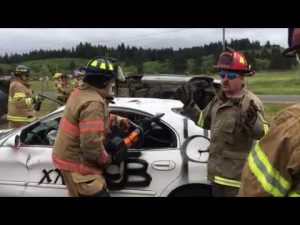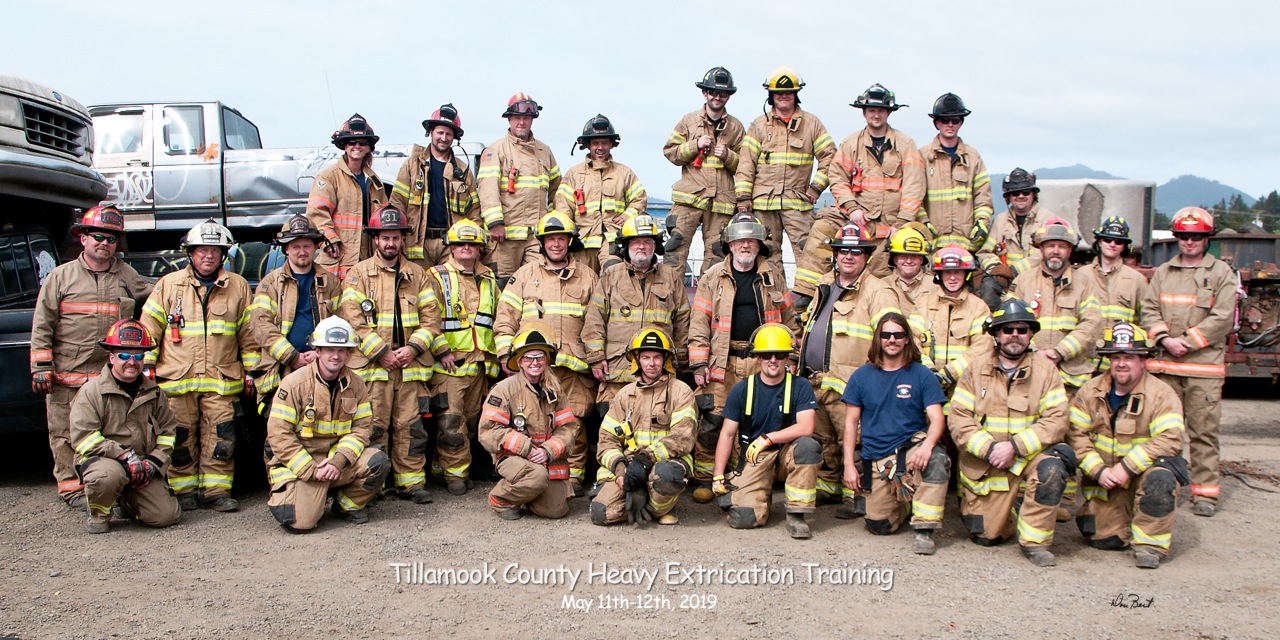By Laura Swanson, editor, Tillamook County Pioneer
Photos by Don Best
Last weekend, on May 11th and 12th, thirty fire and rescue volunteers from six Tillamook County fire departments had the opportunity to receive training on “heavy” extrication methods and equipment. The class focused on vehicle extrication course with a emphasis on heavy equipment, such as buses, trucks, tractor/trailers, etc. This class was made possible by a grant from the Department of Public Safety Standards and Training for $10,000 awarded to the Tillamook Fire Defense Board to bring instructors from Fire Rescue Northwest that specialized in this course to Tillamook County.
The training included classroom instruction as well as “hands-on”. According to Brian Jones, Battalion Chief of Training at Nestucca Fire and Rescue, “This training was a huge benefit, as those that attended will go back with ideas and new approaches for accidents,” He continued, “There is a new industry standard about maintaining spinal mobilization. The victim has already undergone force and trauma, so we work to remove the vehicle from around the person by cutting the car from around the patient.”
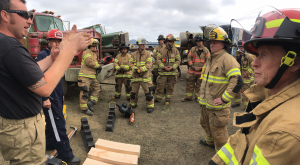
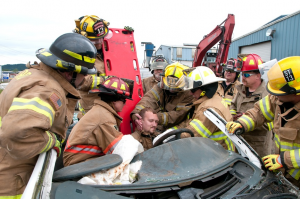 The training includ
The training includ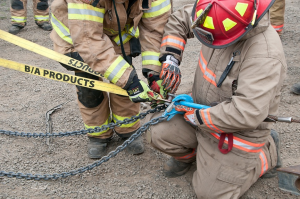 ed a variety of scenarios and practice from basic accidents, lifting and cribbing, and technical entrapment scenarios utilizing realistic, crushed vehicles. The “supplies” for the training were donated
ed a variety of scenarios and practice from basic accidents, lifting and cribbing, and technical entrapment scenarios utilizing realistic, crushed vehicles. The “supplies” for the training were donated 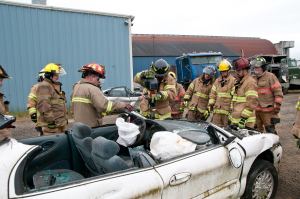 – the area and vehicles were provided by Averill’s;
– the area and vehicles were provided by Averill’s; 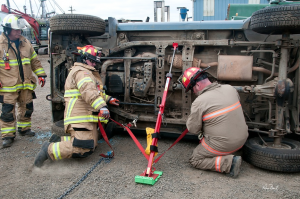 and Burden’s Towing had trucks and drivers participating; and Hampton Lumber provided lumber for the cribbing training. “And each department left with a package of lumber to perform cribbing, in necessary,” commented Jones. “The big takeaway for everyone was knowing what to ask
and Burden’s Towing had trucks and drivers participating; and Hampton Lumber provided lumber for the cribbing training. “And each department left with a package of lumber to perform cribbing, in necessary,” commented Jones. “The big takeaway for everyone was knowing what to ask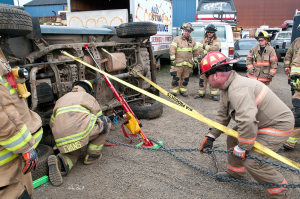 for, the equipment available, which tow trucks for semis, the resources that we have available in our community.” This is specialized, expensive equipment for some of the extrication procedures that only Tillamook Fire District has – the message was loud and clear, “Call us, we’ll come if you need it,” said Jones.
for, the equipment available, which tow trucks for semis, the resources that we have available in our community.” This is specialized, expensive equipment for some of the extrication procedures that only Tillamook Fire District has – the message was loud and clear, “Call us, we’ll come if you need it,” said Jones.
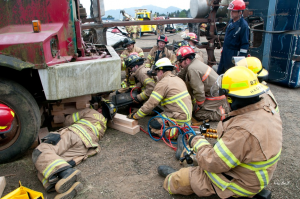
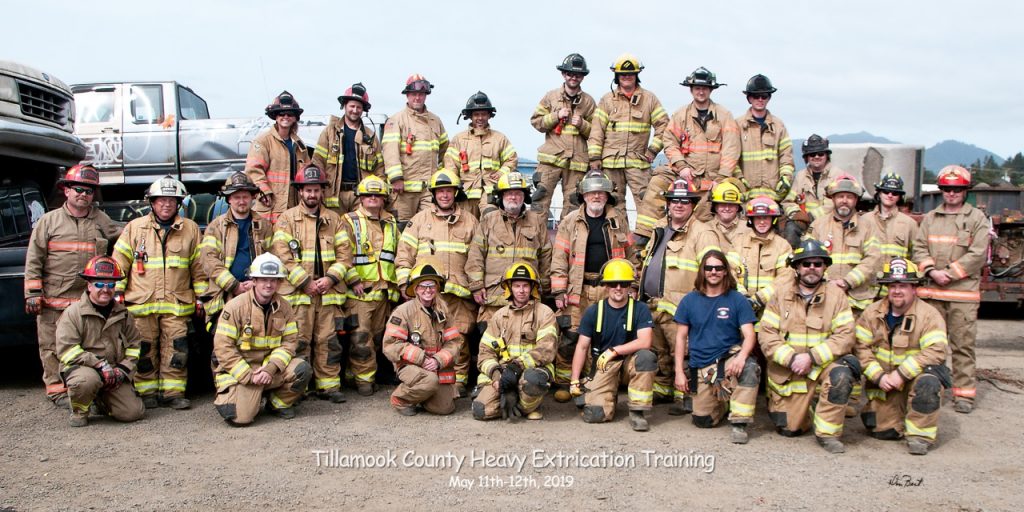
We certified 30 students from 6 of the county’s fire districts,” he continued. “The class gives each district some tools, training and knowledge to be able to approach one of the low frequency, but high risk incidents that are possible on our more congested highways and the volume of heavy equipment, RVs, log trucks, semis and car traffic. We will be better prepared to serve our community and take care of everyone as safely as possible.
Here is some video from the training:
